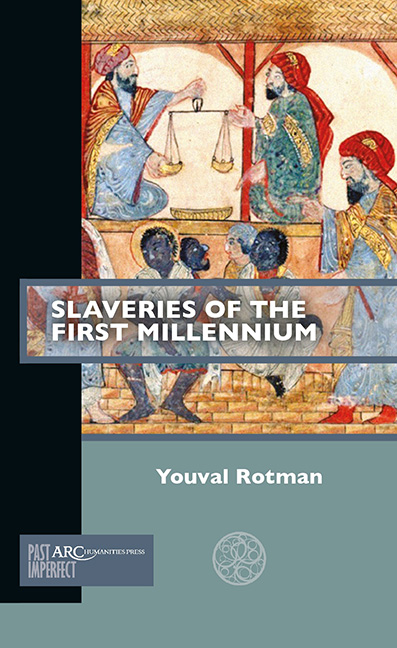Book contents
- Frontmatter
- Contents
- Introduction: Whence Slavery?
- Chapter 1 From Present to Past and Back
- Chapter 2 Slavery between Two Phenomena: Empire and Christianity
- Chapter 3 Enslavement, Captivity, and the Monotheistic Turn
- Chapter 4 New Polities, New Societies, New Economies
- Chapter 5 Migration, Integration, Connectivity
- Conclusion: Slavery as Historical Process— Towards a New Definition
- Further Reading
Conclusion: Slavery as Historical Process— Towards a New Definition
Published online by Cambridge University Press: 13 January 2022
- Frontmatter
- Contents
- Introduction: Whence Slavery?
- Chapter 1 From Present to Past and Back
- Chapter 2 Slavery between Two Phenomena: Empire and Christianity
- Chapter 3 Enslavement, Captivity, and the Monotheistic Turn
- Chapter 4 New Polities, New Societies, New Economies
- Chapter 5 Migration, Integration, Connectivity
- Conclusion: Slavery as Historical Process— Towards a New Definition
- Further Reading
Summary
The previous chapters have examined different phenomena of persons, societies, and cultures enslaving others and they have revealed the ways that they were systematized. The long-term historical perspective adopted in this study has revealed the ways in which slavery was connected to the development of distinct societies during the period of their formation and transformation. Enslavement of human beings was not just a part of the major historical processes of Mediterranean, European, and Middle Eastern societies in the first millennium, but played a constitutive role in their development. One of the main conclusions to draw from this study is that slavery operates as a system: it provides legal structures for acts of enslavement, adapts itself to the socioeconomic setting, and also justifies itself within a cultural and ideological context.
We normally refer to slavery in the singular. However, the complexity and diversity of societies, economies, polities, and cultures of the first millennium resulted in very diverse forms of slavery. This diversity was a product of different conditions, circumstances, and needs that created different forms of enslavement for different purposes; this shows the adaptable and versatile character of the system of slavery. We therefore need to refer to slaveries in the plural, and to understand the ways they are connected to processes of change and transformation, that is, to understand slavery as a historical process. By adapting the forms of socioeconomic subjugation to changing circumstances, systems of slavery develop, change, and grow. The fact that this is done by exploiting and abusing human beings, and by using extreme violence and domination over them, does not prevent slavery from becoming central to processes of development. On the contrary, the legitimation of the use of severe force, violence, and coercion is what allows slavery to flourish.
Enslavement is an act of violence. It changes forever the status and state of a human being, whether born or made enslaved. Persons who sell or bind themselves, or participate in their enslavement as active agents, no matter what the reasons and motivations may be, are not enslaving themselves, but are being enslaved by others. Slavery is the system that allows acts of enslavement to happen, legitimizing, institutionalizing, and sustaining them.
- Type
- Chapter
- Information
- Slaveries of the First Millennium , pp. 121 - 126Publisher: Amsterdam University PressPrint publication year: 2021



